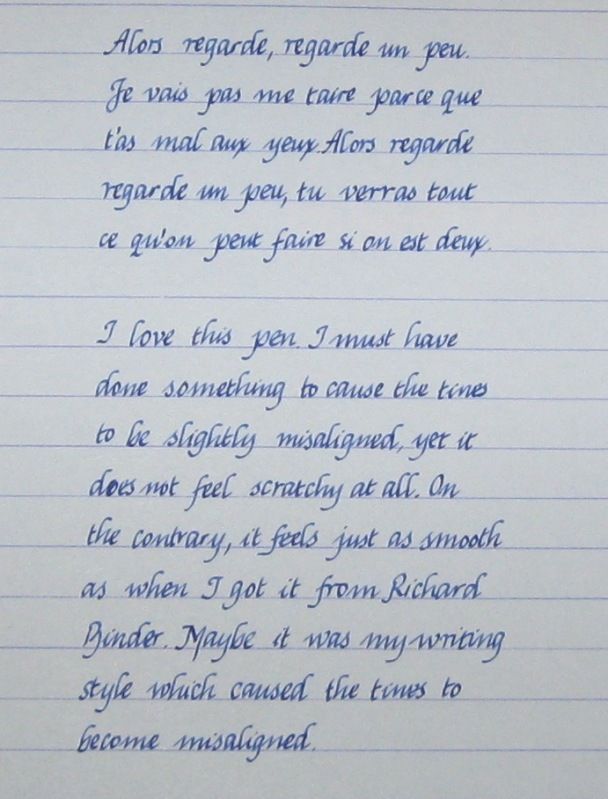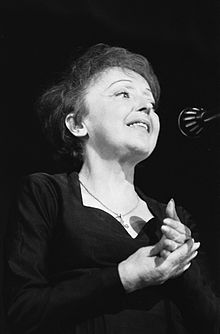 When I first started writing, I was still at prep school, and used a pen which you had to dip in ink every few words—the direct descendant of a quill pen. Such pens had handles of wood which were uncomfortable to hold—and it was near impossible to write for any length of time without getting ink on your fingers. You tried to remove that with a pumice stone—only to have it replaced the following day.
When I first started writing, I was still at prep school, and used a pen which you had to dip in ink every few words—the direct descendant of a quill pen. Such pens had handles of wood which were uncomfortable to hold—and it was near impossible to write for any length of time without getting ink on your fingers. You tried to remove that with a pumice stone—only to have it replaced the following day.
 Those wooden-handled pens (much less shapely than the above example)were horrible things and they required an open inkwell to be built into every desk. Such removable inkwells made excellent missiles—and splattered well when thrown. Low intensity warfare was a feature of much of my early school life. We used rulers to fence with, paper pellets fired from rubber bands as projectile weapons, and fists at close quarters. Dip pens were also used to jab with. The handle was normally used to impact with, but sometimes the nib end came in handy.
Those wooden-handled pens (much less shapely than the above example)were horrible things and they required an open inkwell to be built into every desk. Such removable inkwells made excellent missiles—and splattered well when thrown. Low intensity warfare was a feature of much of my early school life. We used rulers to fence with, paper pellets fired from rubber bands as projectile weapons, and fists at close quarters. Dip pens were also used to jab with. The handle was normally used to impact with, but sometimes the nib end came in handy.
I don’t think I wrote anything of any note until my grandmother gave me a Parker fountain with a gold plated nip. This held a reservoir of ink inside the more bulbous handle and was the iPad of its day as far as I was concerned. I thought it was just wonderful, and began to write at length—sometimes just for the pleasure of seeing words appear on the page. A fountain pen also made it vastly easier to write lines—a standard punishment at the time. Trying to write: “Revise with a pen in your hand,” a hundred times with a dip pen was not a pleasant task.
 In my early teens I ran across Bic ballpoints and found they were better than fountain pens for taking notes with. Fountain pens tended to dry out while you waited for the teacher to utter his words of wisdom. As a consequence I switched to Bics filled with green ink and kept truly excellent notes with them. Using a ballpoint was frowned upon for essay writing or any serious work so I would revert to a fountain pen equipped with an italic nib. At that stage I had been taught italic writing so my handwriting looked pretty much like the above example.
In my early teens I ran across Bic ballpoints and found they were better than fountain pens for taking notes with. Fountain pens tended to dry out while you waited for the teacher to utter his words of wisdom. As a consequence I switched to Bics filled with green ink and kept truly excellent notes with them. Using a ballpoint was frowned upon for essay writing or any serious work so I would revert to a fountain pen equipped with an italic nib. At that stage I had been taught italic writing so my handwriting looked pretty much like the above example.
It wasn’t to last. Broadly speaking, the quality of my handwriting decreased much as my libido increased—so by my late teens, I had largely abandoned italic writing for the functionality of a ballpoint—and my writing had become pretty terrible.
The solution was a typewriter, but though I made various attempts to learn to type, the skill eluded me. What is more, I didn’t like manual typewriters. They were hard work—and didn’t produce the visual look I was after. Electric typewriters did produce an excellent result, but I couldn’t afford one. I continued to do most of my writing by hand.
This was odd because my writer friends—whether they could type properly or not—were passionately fond of their machines and continued to use them until either writer or machine—decidedly battered by life—died of old age.
I often wonder would I ever have become a writer if computers had not been invented. I followed their development from the early days of dedicated word processors (remember Wang anyone?) followed Apple’s development with fascination, and actually had a Next on loan for a while. The Next was a vision ahead of the prevailing technology, but it was a clear indication of where Steve Job was heading.
I followed the evolution of computers with the enthusiasm of the most fanatical sports fan, and I hate to think how much money I spent travelling to exhibitions and buying software that—mostly—was a disappointment. To make matters worse, I have no natural talent for computers. That meant spending a ridiculous amount of money on computer gurus who mostly—when push came to shove—didn’t seem to know much more about these infernal machines than I did.
What I did have was a very clear idea of how I needed to work if I was to optimize my output as an author—and to cover the range of subjects that interest me. Finally, a few months short of my seventieth birthday, I seem to be getting there. It’s a strange feeling because even young children are now more comfortable with a keyboard than—arguably—I will ever be.
That said, despite the breakdowns, the dreadful early days of Windows, the disappointing software and the endless frustrations, computers have helped me become a writer, an author—and a Best Selling Author at that.
 For me, that is as good as it gets. It’s an impossible dream fulfilled—and a joyous way of life.
For me, that is as good as it gets. It’s an impossible dream fulfilled—and a joyous way of life.
As far as I am concerned—in the matter of computers—I regret nothing. Or as Edith Piaf would put it, “No, je ne regrette rien.”
What a singer, what a language, what a life, what a song!
Photo is of Edith Piaf in 1962. She died in 1963 aged 47. Also known as The Little Sparrow, she was 4’ 9” tall.
No comments:
Post a Comment